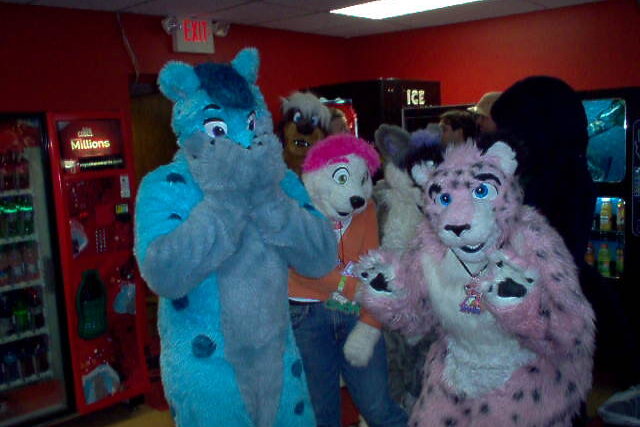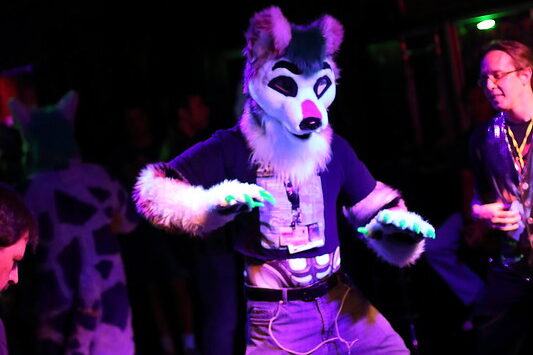1. The Furry Fandom Didn’t Start Where You Think It Did

Picture this: It’s the late 1970s, disco is king, Star Wars just hit theaters, and a small group of sci-fi nerds are geeking out over a comic book featuring anthropomorphic animals. This wasn’t just any comic—it was one of the first sparks that would ignite an entire subculture. Unlike cosplay or comic book conventions, where dressing up is mostly about playing an established character, furries create their own identities from scratch, shaping unique personalities, backstories, and even entire mythologies for their fursonas. These characters aren’t just for show; they’re deeply personal, often serving as an extension of the creator’s personality, dreams, or ideal self. Some furries even say their fursona is closer to their true self than the person they are in everyday life.
Fast forward to today, and what started as niche comic book discussions has grown into a full-fledged cultural phenomenon spanning art, literature, gaming, and even academic research. Conventions, online forums, and social media have brought the fandom into the mainstream, making it more accessible than ever before. What was once an underground interest is now a thriving community filled with artists, writers, performers, and even scientists who embrace their fursonas with pride. Let’s be honest—who wouldn’t want an excuse to run around as a majestic snow leopard for a day?
2. It’s Not Just About Costumes—But Oh, the Costumes!

Sure, the most eye-catching part of the furry fandom is the fursuits—those elaborate, often custom-made animal costumes with expressive eyes, movable jaws, and swishing tails. But here’s what most people don’t realize: these suits can cost anywhere from $2,000 to a staggering $20,000. Why? Because they’re handcrafted works of art, sometimes taking months to complete, with features like built-in fans (because sweating like a real animal isn’t fun), LED lights, and hyper-realistic fur textures. The process of making a fursuit is incredibly detailed, involving sculpting, airbrushing, and sewing, all to bring a fursona to life in the most striking way possible. Some furries even commission custom scent sprays to add an extra sensory dimension to their suits, making them smell like their chosen animal.
However, not all furries wear fursuits. Many express their fursonas through digital art, role-playing, or simply engaging with the community in casual ways. Some prefer minimalist outfits, like a tail or ears, while others dive deep into character development and storytelling. The range of self-expression in the fandom is vast, with no single way to participate. At its heart, the furry movement isn’t about how much fur you wear—it’s about the joy of stepping outside reality, even if just for a moment. After all, in a world where we’re constantly told who to be, isn’t it refreshing to have a space where you can be anything?
3. The Psychology Behind the Fursona

Ever felt like you weren’t quite yourself? That deep down, there was a version of you that was bolder, wilder, or more free? That’s what a fursona represents for many furries—a reflection of their inner personality, often taking the form of an animal they feel a deep connection with. Wolves are popular for their independence and strength, foxes for their cunning and playfulness, and dragons… well, because dragons are just awesome. Studies even suggest that having a fursona can be a form of self-exploration and empowerment, giving people a safe space to express sides of themselves they might struggle to share in their daily lives. Some psychologists have even compared the creation of a fursona to an artist painting a self-portrait—except this one has claws and a tail.
For some, a fursona is simply a fun alter ego. But for others, it’s a deeply personal journey of self-discovery, often helping with confidence, anxiety, or social interactions. Many furries report feeling more comfortable speaking, performing, or engaging with others when in their fursona than in their everyday human form. In a way, it’s like wearing a superhero costume—it’s not about hiding who you are, but amplifying the parts of yourself that feel the most alive. Whether it’s a fierce tiger, a mysterious raven, or a playful otter, each fursona tells a unique story. And if you think about it, don’t we all have a little bit of animal instinct in us?
4. Furry Conventions: A Carnival of Color, Chaos, and Community

Imagine walking into a hotel ballroom filled with people dressed as everything from majestic snow leopards to neon-blue velociraptors. That’s a furry convention—part masquerade, part art show, part social gathering, and 100% unforgettable. These events, like Anthrocon (one of the largest in the world), draw thousands of attendees each year. But it’s not just about parading in costume. There are panels on digital art, voice acting, and even charity events—furries have raised millions of dollars for animal shelters and conservation efforts. And yes, there’s also dancing. Lots of dancing. The energy at these conventions is infectious, with music, laughter, and the occasional surprise when you realize the adorable fox you’ve been talking to is actually a nuclear physicist by day.
But beyond the flashy costumes and impressive performances, furry conventions are about one thing: connection. Many attendees describe their first convention as a life-changing experience, finally meeting others who share their passion in a space that feels safe and accepting. Whether it’s a group of artists trading sketches, a DJ in a full fursuit dropping the bass, or a heartfelt panel on self-expression, these events showcase the many layers of the furry community. It’s a world where friendships are forged, creativity is celebrated, and—at least for a weekend—you get to be the animal you were always meant to be. And let’s be real, who wouldn’t want to attend a party where a dancing dragon is totally normal?
5. The Internet Turned Furries Into a Global Phenomenon

Before the rise of the internet, being a furry was a lot like having a secret identity—most fans only connected through obscure magazines, convention meetups, or word of mouth. But then the digital age arrived, and everything changed. Online forums, social media, and virtual worlds like Second Life gave furries a space to share art, stories, and roleplay, helping the fandom explode in popularity. Platforms like DeviantArt and FurAffinity became digital galleries filled with stunning anthropomorphic artwork, while sites like Twitter turned into thriving hubs for furries to connect, joke, and share their fursona adventures. Suddenly, people who thought they were the only ones with this interest realized they were part of something much bigger.
Today, the furry fandom is a global powerhouse, spanning countless cultures and languages. From fan-run Discord servers to YouTube channels dedicated to fursuit crafting, the community is more connected than ever. Even virtual reality spaces like VRChat have given furries a whole new way to bring their characters to life, with custom avatars allowing for real-time interactions in immersive digital worlds. And while the fandom still faces its fair share of misunderstandings from outsiders, its online presence has made it impossible to ignore. Love it or not, the internet has ensured that the furry movement is here to stay—and it’s only getting wilder.
6. Yes, There’s Furry Music, Fashion, and Even Sports!

If you thought furries were just about art and costumes, think again. The fandom has spawned its own subcultures within the subculture, including musicians who create furry-themed albums, fashion designers who specialize in animal-inspired streetwear, and even sports teams made up entirely of furries. Bands like Fox Amoore compose orchestral pieces inspired by the grandeur of the animal kingdom, while electronic artists infuse their beats with growls and roars for an extra untamed feel. Some furries even create entire stage personas, performing concerts while fully suited up—because why shouldn’t a neon tiger DJ be a thing?
And let’s talk about furry fashion. Beyond fursuits, many fans integrate subtle (or not-so-subtle) animal-inspired elements into their everyday style. Think ears, tails, clawed gloves, or even customized sneakers with paw prints. Some take it a step further, blending streetwear with fursona aesthetics to create unique, high-fashion looks that could easily turn heads at a runway show. And if that’s not enough, there’s even a niche of athletic furries, with groups organizing events like parkour challenges and dance-offs—all while in costume. Because nothing says “dedication” like sprinting in a full-body fur suit.
7. Furries and Charity: The Unexpectedly Generous Side of the Fandom

For a group often misunderstood by the mainstream, furries have one of the biggest hearts out there—literally. The fandom has raised millions of dollars for charities, particularly those focused on animal welfare and conservation. Conventions like Midwest FurFest and FurCon regularly hold fundraising events, benefiting everything from local animal shelters to wildlife rehabilitation programs. Some furries even volunteer their time at hospitals or charity runs, donning their suits to entertain children and spread positivity. And let’s be honest—who wouldn’t smile if a giant, fluffy wolf showed up to cheer them on during a marathon?
But the generosity doesn’t stop at animals. Many furries contribute to mental health initiatives, LGBTQ+ support groups, and even disaster relief efforts. During the COVID-19 pandemic, several furries used their suit-making skills to sew masks for frontline workers, proving that creativity and compassion go hand in hand. Despite the misconceptions, the furry community has consistently shown that it’s not just about dressing up—it’s about using that passion to make a difference. In a world that can often feel harsh, sometimes all it takes is a friendly fox giving out free hugs to remind us of the kindness still out there.


